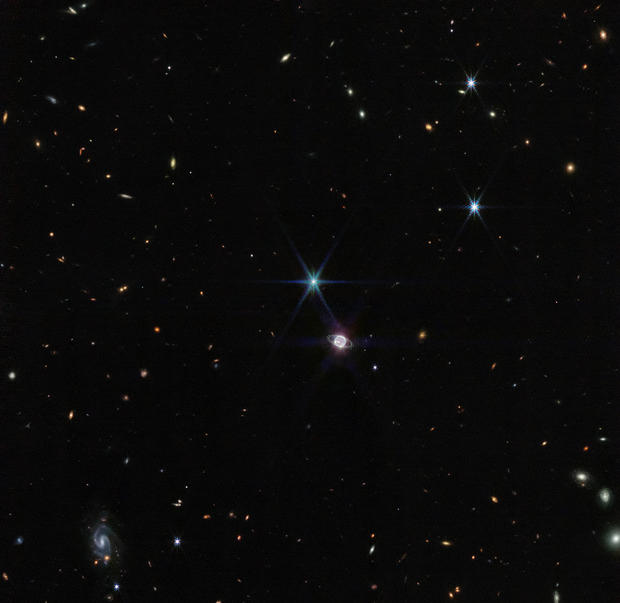James Webb Space Telescope captures strikingly crisp images of Neptune and its rings
(CNN) -- New images released Wednesday from NASA's James Webb Space Telescope are revealing Neptune, and the planet's hard-to-detect rings, in a fresh light.
"It has been three decades since we last saw these faint, dusty rings, and this is the first time we've seen them in the infrared," said Heidi Hammel, a Neptune expert and interdisciplinary scientist on the Webb project, in a news release.
In addition to several crisp, narrow rings, the Webb images show Neptune's fainter dust bands. Some of the rings haven't been observed since NASA's Voyager 2 got the first photographic proof of the existence of Neptune's rings during its flyby in 1989.
The operations center for the telescope is in Baltimore, at the Space Telescope Science Institute on the Johns Hopkins campus.
Dark, cold and whipped by supersonic winds, Neptune is the most distant planet in our solar system. The planet and its neighbor Uranus are known as "ice giants" because their interiors are made up of heavier elements than the gas giants Jupiter and Saturn, which are richer in hydrogen and helium.
In the new images, Neptune looks white, as opposed to the typical blue appearance it has in views captured at visible wavelengths of light. This is because gaseous methane, part of the planet's chemical makeup, doesn't appear blue to Webb's Near-Infrared Camera (NIRCam).
Also visible in the images are methane-ice clouds -- bright streaks and spots that reflect sunlight before it is absorbed by methane gas. It's also possible to spot a bright, thin line circling the planet's equator, which could be "a visual signature of global atmospheric circulation that powers Neptune's winds and storms," according to the release.
Webb also captured seven of Neptune's 14 known moons, including its largest moon, Triton, which moves around the planet at an unusual backward orbit. Astronomers think Triton was perhaps an object in the Kuiper Belt -- a region of icy objects at the edge of the solar system -- that fell into Neptune's gravitational grasp. Scientists plan to use Webb to further study Triton and Neptune in the coming years.
Located 30 times farther from the sun than Earth, Neptune moves through its solar orbit in the remote, dark region of the outer solar system. At that distance, the sun is so small and faint that noon on Neptune is similar to a dim twilight on Earth, the news release said.
Webb is a more than 10-year mission run by NASA, the European Space Agency and the Canadian Space Agency.
Compared with other telescopes, the space observatory's massive mirror can see fainter galaxies that are farther away and has the potential to enhance scientists' understanding of the origins of the universe. However, it's also using its stable and precise image quality to illuminate our own solar system, with images of Mars, Jupiter and now Neptune.
The-CNN-Wire
™ & © 2022 Cable News Network, Inc., a Warner Bros. Discovery Company. All rights reserved.





